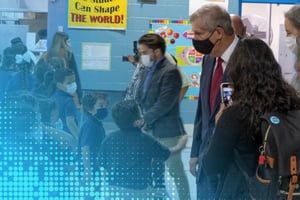Since 1946, the National School Lunch Program has provided nutritionally balanced, low-cost or no-cost lunches in schools to improve the health and wellbeing of America’s children. Research shows school meals may be the healthiest food children receive in a day, especially during the COVID-19 pandemic.
USDA Helps School Children with the National School Lunch Program
The National School Lunch Program is arguably the most important anti-hunger program for school children in the United States. As we welcome kids back to school for the 2022-2023 school year, let’s learn more about the NSLP and its impact in the United States …
This program provides nutritionally balanced meals at little to no cost to school children during the school day. It was established under the Richard B. Russell National School Lunch Act, signed into law by President Harry Truman in 1946. Since its start, the NSLP has gone from reaching 7.1 million children to now reaching over 30 million each year. The exponential growth of this program, has made it influential is fighting youth hunger in America.
SRC: USDA and American Action Forum
This program is available in public as well as private schools for years K-12 (generally). On a federal level, the Food and Nutrition Services monitors and administers this program but on a state level it is administered through various state agencies who work directly with schools to reach agreements for the program. The USDA recently increased funding for school lunch programs to help combat rising costs. The estimated $4.3 billion bump will be essential for expanding the reach of this program in the 2022-2023 school year.
Who is eligible for free or reduced lunch?
Children who are SNAP recipients or are foster, homeless, migrant, or runaway children are eligible for this program. Children can also qualify for NSLP based on household income: children from families with incomes at or below 130% of the Federal poverty level are eligible for free meals. Those with incomes between 130 and 185% of the Federal poverty level are eligible for reduced price meals. Schools cannot charge more than $0.40 for reduced price lunch.





